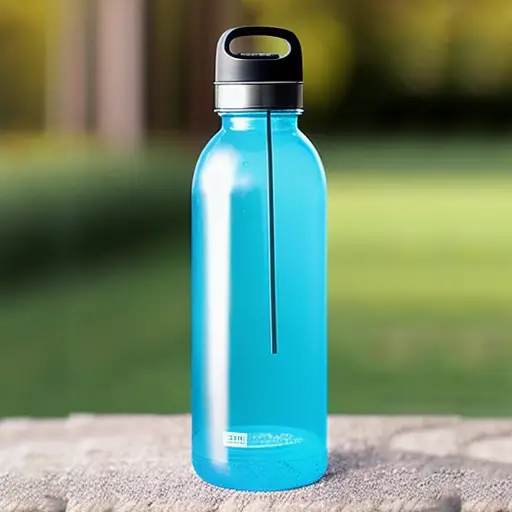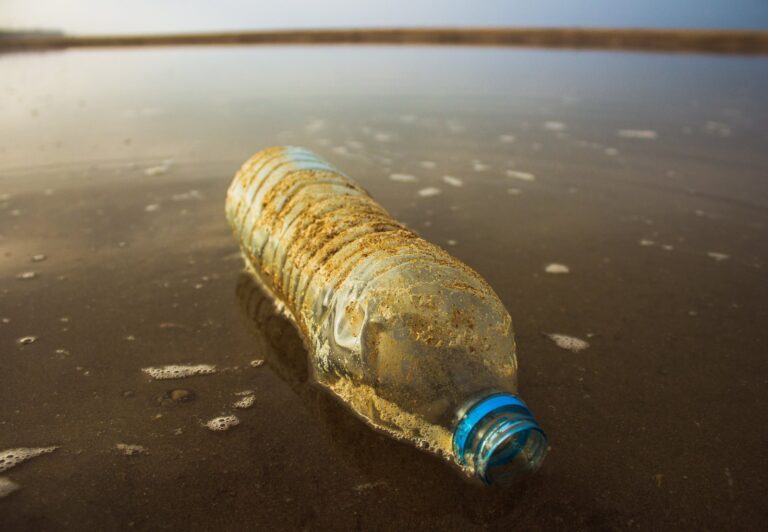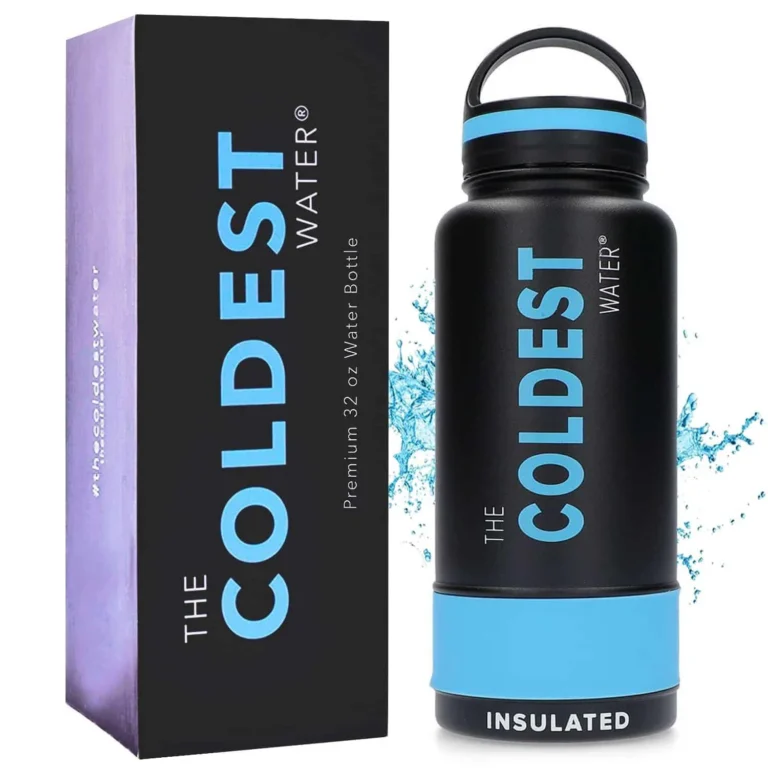Water is essential for our overall health and well-being. Many of us carry water bottles to stay hydrated throughout the day. But have you ever thought about the material of the water bottle you use? Some people believe that plastic bottles can be harmful to health due to chemicals in the plastic, while others argue that stainless steel and glass bottles are not practical for daily use. So, which material water bottle is best for health? Let’s explore the pros and cons of different water bottle materials to help you make an informed decision.
I. Importance of choosing a safe and healthy water bottle material
When it comes to choosing a water bottle, the material it’s made of is an important factor to consider. Not only does it affect the taste of your water, but it can also impact your health. Opting for a safe and healthy water bottle material is essential for overall well-being. Certain materials, such as glass, stainless steel, aluminum, and copper, offer distinct advantages and disadvantages. Glass, for example, is known for its purity of taste and lack of chemical leaching. Stainless steel, on the other hand, is non-reactive and free from harmful chemicals. Aluminum is lightweight and durable, although it may impart a metallic taste. Copper bottles have a long history of use and antibacterial properties. Lastly, plastic water bottles should be avoided due to concerns about BPA and recycling challenges. By carefully considering the different materials available, you can choose the best water bottle that suits your needs while prioritizing your health and safety.
II. Glass water bottles
A. Benefits of using glass as a water bottle material
Glass is a sought-after material for water bottles due to its many benefits. One key advantage is the purity of taste it offers. Unlike some materials that can leach chemicals into your drink, glass keeps your water pristine and untainted. This is especially important for those who are conscious of their health and want to avoid any potential harmful substances. Additionally, glass is an inert material, meaning it does not react with the liquids it contains. This ensures that no unwanted flavors are transferred to your beverage. Glass water bottles also come in a wide variety of styles, catering to different needs and preferences. Whether you prefer a sleek and modern design or a more vintage-inspired look, there is a glass water bottle for you.
B. Purity of taste and lack of chemical leaching
When it comes to choosing a safe and healthy water bottle material, glass is often touted as the best option. One of the key benefits of using glass as a water bottle material is the purity of taste it offers. Unlike some other materials, glass does not leach any chemicals into the water, ensuring a clean and untainted drinking experience. This is particularly important for those who prefer the natural taste of water without any added flavors or odors that may come from other materials. Additionally, glass is inert, meaning it does not react with the water or alter its composition in any way. This makes it an ideal choice for those concerned about potential health risks associated with chemical leaching. So, if you’re looking for a water bottle material that provides a pure and untainted taste, glass is definitely worth considering.
C. Safety precautions and different types of glass
When it comes to choosing a safe and healthy water bottle material, it is essential to prioritize safety precautions. Glass, as a water bottle material, offers several advantages in this aspect. Firstly, glass is non-toxic and does not leach any harmful chemicals into the water. This ensures the purity of taste and guarantees a chemical-free drinking experience. Additionally, there are various types of glass available in the market, each with its own safety features. For example, borosilicate glass is known for its durability and ability to withstand high temperatures, making it a reliable choice. Soda-lime glass is another option that is commonly used for water bottles due to its affordability and good resistance to impacts. By being mindful of the type of glass used and following safety precautions such as avoiding extreme temperature changes, glass water bottles can be a safe and healthy option for daily hydration.
III. Stainless steel water bottles
A. Advantages of stainless steel water bottles
Stainless steel water bottles have become increasingly popular due to their numerous advantages. One of the key benefits is their non-reactivity, which means that the material does not interact with the contents of the bottle, ensuring that no harmful chemicals leach into your water. This is particularly important when it comes to acidic or carbonated drinks, as some materials can release toxins when exposed to these substances. Another advantage of stainless steel water bottles is their insulation capabilities. This means that they can keep your beverages hot or cold for longer periods of time, making them ideal for outdoor activities or long commutes. Additionally, stainless steel water bottles come in a wide variety of styles and designs, allowing you to find one that suits your personal preferences. Whether you prefer a sleek and minimalist look or a bold and colorful design, there is a stainless steel water bottle that fits your style. With their safety, functionality, and aesthetic appeal, it’s no wonder why stainless steel water bottles are a popular choice for those looking to prioritize their health and well-being.
B. Non-reactivity and absence of harmful chemicals
One of the key advantages of stainless steel water bottles is their non-reactivity and absence of harmful chemicals. When it comes to choosing a water bottle material, it’s important to consider the potential health risks associated with certain materials. Unlike plastic or aluminum, stainless steel does not leach harmful chemicals into your water. This means you can enjoy a refreshing drink without worrying about ingesting any toxins. Stainless steel is also known for its durability and long-lasting quality, making it an excellent choice for those who lead an active lifestyle. Additionally, stainless steel water bottles come in a wide variety of styles and designs, allowing you to find one that suits your personal preference. So when it comes to prioritizing your health and well-being, a stainless steel water bottle is definitely worth considering.
C. Insulation capabilities and wide variety of styles
When it comes to choosing the best material for a water bottle, stainless steel often takes the crown. But don’t underestimate the advantages of glass. In terms of insulation capabilities, glass performs admirably well. It can keep your water cool or hot for a considerable amount of time, making it an excellent choice for those who prefer their beverages at a desired temperature. Furthermore, glass water bottles come in a wide variety of styles, offering something for everyone’s taste and preference. From sleek and minimalist designs to intricately patterned ones, glass bottles can be as aesthetically pleasing as they are functional. So, if you’re looking for a water bottle that can keep your drink at the perfect temperature and make a style statement, consider opting for glass.
IV. Aluminum water bottles
A. Overview of aluminum as a water bottle material
Aluminum is a common material used in water bottles due to its lightweight and durable nature. However, there are some important considerations to keep in mind when it comes to using aluminum water bottles. Firstly, aluminum bottles usually have a lining on the inside to prevent the metal from leaching into the water. This lining is typically made of a non-toxic material such as epoxy resin. However, some people may have concerns about potential chemical leaching from this lining, particularly if the bottle is damaged or shows signs of wear. Secondly, aluminum bottles are generally considered safe as long as they are properly cared for and not exposed to extreme heat or acidic substances. Lastly, it is worth noting that some individuals may detect a slight metallic taste when using aluminum bottles. Overall, while aluminum has its advantages, it is essential to be aware of these considerations when selecting a water bottle material.
B. Lining and safety considerations
When considering aluminum as a water bottle material, it’s crucial to address the issue of lining and safety considerations. Aluminum water bottles are typically lined with a protective coating to prevent the interaction between the metal and the water. This lining acts as a barrier, ensuring that no aluminum particles or ions leach into the water. However, some concerns have been raised about the safety of these linings, particularly if they are made with harmful chemicals like BPA. It’s essential to choose aluminum water bottles that are explicitly labeled as BPA-free to mitigate any potential health risks. Additionally, regular inspection of the interior lining is advised, as any signs of wear or damage could compromise its effectiveness. By carefully considering these lining and safety factors, you can enjoy the benefits of using an aluminum water bottle without compromising your health.
C. Durability and potential metallic taste
Durability is an important factor to consider when choosing a water bottle material. Aluminum, known for its strength and resistance to dents and scratches, is a highly durable option. It can withstand rough handling and is less likely to break compared to glass or plastic bottles. However, one potential downside of aluminum is the potential metallic taste it can impart to the water. While some people may not mind this taste, others may find it off-putting. To minimize this issue, many aluminum water bottles are lined with a food-grade coating to create a barrier between the metal and the water. This lining helps to reduce the metallic taste and ensure the water remains fresh and untainted. It is important to choose aluminum bottles with a high-quality lining to ensure the best experience and avoid any potential health concerns.
V. Copper water bottles
A. Historical usage and potential health benefits of copper
Copper has been used for centuries due to its various health benefits. Its historical usage dates back to ancient civilizations such as the Egyptians and Greeks, who believed in its healing properties. Copper is known to possess antimicrobial properties, which means it can kill certain bacteria and viruses. This makes it a popular choice for water bottles, as it helps maintain the cleanliness of the water. Additionally, copper is believed to aid in digestion and boost the immune system. However, it’s important to note that excessive intake of copper can be harmful, leading to copper toxicity. Therefore, it’s advisable to use copper water bottles in moderation and consult with a healthcare professional if you have any concerns.
B. Copper’s antibacterial properties
Copper has been in use for centuries, and this metal possesses some intriguing antibacterial properties. Research has shown that copper can effectively kill bacteria and prevent their growth on its surface. This attribute makes copper water bottles a popular choice for those who prioritize hygiene and health benefits. The antibacterial properties of copper are particularly advantageous in environments where water may be stored for extended periods, such as during hikes or long journeys. The copper ions that are released into the water act as a natural disinfectant, eliminating bacteria that can cause various illnesses. However, it is important to note that copper water bottles should be properly cleaned and maintained to ensure their efficacy. Moreover, individuals with copper allergies or sensitivities should exercise caution and consult with their healthcare professional before using copper water bottles.
C. Limitations and considerations for copper water bottles
Copper water bottles have gained popularity in recent years due to their historical usage and potential health benefits. However, it is important to consider the limitations and considerations before opting for a copper water bottle.
One limitation of copper water bottles is the possibility of copper leaching into the water. Copper is a naturally occurring metal that can dissolve into liquids, especially when they are acidic or hot. This can lead to a metallic taste and potentially harmful copper levels in the water.
Furthermore, copper water bottles require regular cleaning and maintenance. Copper can react with certain substances and develop a patina or greenish layer over time. Consequently, it is important to clean copper water bottles thoroughly and regularly to prevent the buildup of harmful bacteria or mold.
Lastly, some individuals may have copper allergies or sensitivities. People with conditions such as Wilson’s disease, which causes excess copper retention in the body, should avoid using copper water bottles altogether.
While copper water bottles have potential health benefits and antibacterial properties, it is essential to consider these limitations and consult with a healthcare professional before incorporating them into your daily routine.
VI. Plastic water bottles
A. Importance of avoiding plastic water bottles
Plastic water bottles are everywhere – convenient, accessible, and seemingly harmless. However, maintaining good health means taking a closer look at the materials we use daily, especially when it comes to water bottles. The importance of avoiding plastic water bottles cannot be emphasized enough. The alarming truth is that plastics can leach harmful chemicals into our drinking water, posing serious health risks. One such chemical is bisphenol A (BPA), which has been linked to various health issues, including hormonal disruptions and reproductive problems. Opting for BPA-free plastic bottles might seem like a solution, but it’s important to note that these alternatives may still contain other harmful chemicals. Furthermore, plastic bottles contribute to pollution and are notoriously difficult to recycle. With the multitude of safer and healthier alternatives available, it’s best to steer clear of plastic water bottles altogether.
B. BPA-free options and recycling challenges
BPA or Bisphenol A is a chemical commonly found in plastic materials, including water bottles. Studies have suggested that BPA can have adverse effects on human health, including hormonal disruption. In response to this concern, many companies now offer BPA-free water bottle options. These bottles are made from materials that do not contain BPA, such as stainless steel or glass. Switching to BPA-free water bottles can reduce the risk of exposure to this potentially harmful chemical.
However, while BPA-free options are certainly a step in the right direction, recycling challenges still exist. Plastic water bottles, including those that are BPA-free, contribute to the growing issue of plastic waste in our environment. Many plastic bottles end up in landfills or oceans, where they can take hundreds of years to decompose. Recycling is a solution, but unfortunately, only a small percentage of plastic water bottles are recycled each year.
To address this challenge, it is important for individuals to prioritize reusable water bottles made from materials like glass or stainless steel. These options not only eliminate the need for single-use plastic bottles but also offer long-lasting durability. By choosing BPA-free options and properly disposing or recycling water bottles, we can make a positive impact on both our health and the environment.
C. Safety precautions and other material variations
When it comes to choosing a safe and healthy water bottle material, it is important to take certain safety precautions and consider various material variations. One common concern is the leaching of chemicals into the water, which can be harmful to our health. While glass bottles are a popular choice for their purity of taste and lack of chemical leaching, it is crucial to handle them with care to avoid breakages. Stainless steel bottles, on the other hand, are known for their non-reactivity and absence of harmful chemicals. Additionally, they come in a wide variety of styles and offer excellent insulation capabilities. Another option is aluminum, which is durable but can potentially impart a metallic taste to the water. Finally, copper water bottles have been historically used for their potential health benefits and antibacterial properties, but limitations and considerations need to be taken into account. In conclusion, the best water bottle material for health ultimately depends on personal preferences and specific safety precautions.
VII. Conclusion
Recommendation for the best water bottle material for health
After considering the various materials commonly used for water bottles, glass emerges as the top recommendation for those looking for the best option for their health. Not only does glass provide a pure and untainted taste, but it also lacks the risk of chemical leaching that may occur with other materials. Furthermore, glass is considered safe for use in water bottles, provided that certain precautions are taken, such as avoiding extreme temperature changes and handling with care. Stainless steel is another excellent choice due to its non-reactivity and absence of harmful chemicals. Additionally, stainless steel bottles offer insulation capabilities and provide a wide variety of styles to suit individual preferences. Although aluminum is a commonly used material, it may come with safety concerns, including the potential for a metallic taste. Copper, on the other hand, has a rich historical usage and potential health benefits, particularly its antibacterial properties. However, limitations and considerations, such as the potential for the greenish hue to transfer to the water, must be taken into account. Lastly, it is crucial to avoid plastic water bottles, as they may contain harmful chemicals like BPA. While BPA-free options exist, recycling challenges and safety precautions still need to be considered. Ultimately, the best water bottle material for health ultimately depends on personal preferences and considerations, but glass and stainless steel are often the top choices.
Available options and considerations for personal preferences
When it comes to choosing the best water bottle material for health, there are various options available that cater to different personal preferences. Glass water bottles offer a pure taste and lack of chemical leaching. They come in different types, such as borosilicate glass which is known for its durability and resistance to thermal shock. Stainless steel water bottles are advantageous due to their non-reactivity and absence of harmful chemicals. They also have insulation capabilities, keeping your beverages hot or cold for longer periods. Aluminum water bottles are known for their durability, but it’s important to consider the lining inside to ensure safety. Copper, historically used for water vessels, has potential health benefits with its antibacterial properties. However, limitations and considerations, such as potential metallic taste, should be taken into account. Lastly, it is important to avoid plastic water bottles and opt for BPA-free options. Recycling challenges should also be considered. Ultimately, the best water bottle material for health depends on individual preferences and priorities.




